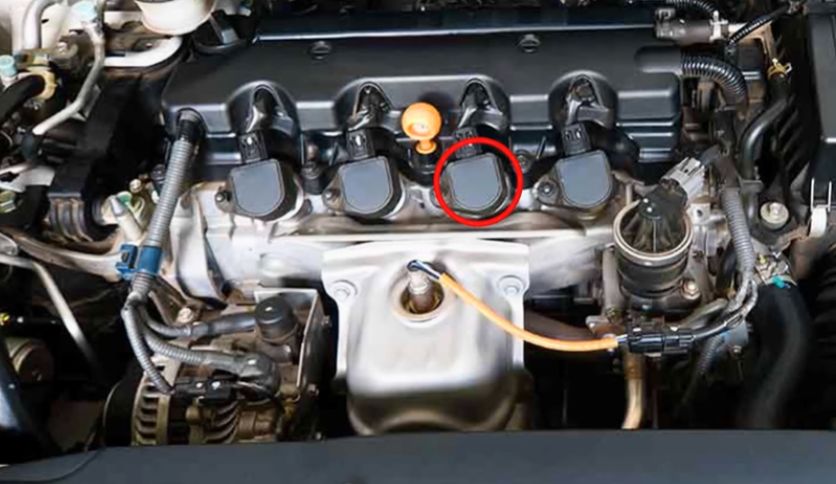One morning, my Jeep Wrangler’s dashboard flashed the unsettling check engine light. A quick check with my OBD-II scanner revealed the P0300 code, an indication of random multiple-engine misfires. For many, this might be just a technical hiccup, but for me, a passionate Jeep owner, it became a quest for understanding.
Delving into forums, discussing with fellow Jeep enthusiasts, and consulting expert mechanics, I embarked on a journey from initial confusion to eventual clarity. This wasn’t just about deciphering a code; it was about deepening my bond with my Jeep, reinforcing that with dedication and the right knowledge, any vehicular challenge can be surmounted.
Causes of the P0300 Code in Jeep Wrangler
Understanding the P0300 code requires delving into the potential triggers behind it. Through my hands-on experience, discussions with expert mechanics, and exhaustive research, I’ve compiled a comprehensive list of potential causes:
- Misfiring Spark Plugs:
- Spark plugs are essential for igniting the air-fuel mixture.
- Over time, they can degrade, leading to inconsistent sparking.
- Worn-out or dirty spark plugs can lead to random misfires, triggering the P0300 code.
- Faulty Fuel Injector:
- Responsible for delivering fuel into the combustion chamber.
- Blockages or malfunctions can disrupt the optimal fuel-air mixture.
- A faulty injector can cause an uneven combustion process.
- Vacuum Leaks:
- The engine relies on a precise air-fuel ratio for efficient combustion.
- Even minor leaks can introduce extra air, disturbing this balance.
- Leaks can occur in various places, including intake manifolds and vacuum hoses.
- Malfunctioning Ignition Coils:
- These play a pivotal role in generating the spark needed for combustion.
- A malfunctioning coil can lead to incomplete or erratic combustion.
- Over time, coils can degrade, especially if exposed to moisture or contaminants.
- Damaged Distributor or Rotor:
- These components ensure that the spark is distributed to the right cylinder at the right time.
- Wear and tear or damage can result in the spark being sent to the wrong cylinder.
- This misalignment can lead to multiple misfires.
In my journey with my Jeep Wrangler, understanding these potential causes was the first step towards troubleshooting and rectifying the P0300 code. With this knowledge in hand, Jeep owners can make informed decisions about repairs and maintenance.
Symptoms That Alerted Me
Every vehicle has its unique rhythm and quirks, and my Jeep Wrangler was no exception. However, certain unfamiliar patterns began to emerge, signaling that something was amiss. These were the symptoms that made me suspect an underlying issue:
- Engine Vibration:
- Not the typical roughness of an off-road drive, but a distinct shudder even on smooth roads.
- Particularly noticeable at idle, it felt as if the engine was struggling to maintain stability.
- Decreased Fuel Efficiency:
- A sudden drop in miles per gallon, making frequent trips to the gas station.
- This inefficiency hinted at incomplete combustion or fuel wastage.
- Starting Issues:
- The engine hesitated, taking longer than usual to roar to life.
- Cold mornings seemed to exacerbate the problem, making me wonder about the spark plugs’ efficiency.
- Engine Stalling:
- On a couple of occasions, the engine stalled, especially during acceleration or at low speeds.
- This was alarming, as it indicated severe misfiring or combustion issues.
- Check Engine Light:
- The unmistakable sign that every driver dreads.
- It illuminated intermittently, hinting at an inconsistent problem rather than a constant fault.
Recognizing these symptoms early on was crucial. It allowed me to take proactive steps, ensuring that the issue didn’t escalate further. For every Jeep Wrangler owner, being attuned to these signs can be the difference between a minor fix and a major repair.
How I Addressed the P0300 Code

When faced with the P0300 code, I recognized the need for a systematic and thorough approach. Rather than hastily jumping to conclusions, I delved deep, researching, consulting, and eventually implementing the following solutions:
- Regular Spark Plug Checks:
- Understanding the pivotal role of spark plugs in combustion, I initiated routine inspections.
- I looked for signs of wear, carbon build-up, and damage.
- Replacing them became a priority, ensuring I opted for high-quality plugs compatible with my Jeep Wrangler.
- Fuel Injector Maintenance:
- Recognizing the importance of a clean and efficient fuel delivery system, I took steps to maintain the injectors.
- Used a fuel injector cleaner additive during fuel-ups to prevent blockages.
- Periodically, I’d have them professionally cleaned, ensuring optimal spray patterns and performance.
- Vacuum Leak Detection and Repairs:
- I invested in a smoke machine test, a reliable method to detect even minor leaks.
- Regularly checked vacuum hoses, seals, and gaskets for signs of wear or damage.
- Prompt repairs ensured that the air-fuel mixture remained optimal, preventing misfires.
- Ignition Coil Inspection:
- Recognizing their role in generating the necessary spark, I ensured they were in top working condition.
- Used an ohmmeter to check for resistance, ensuring it fell within the specified range.
- Replaced any coils showing signs of wear, damage, or malfunction, ensuring a consistent spark for combustion.
- Distributor and Rotor Maintenance:
- Being critical components in directing the spark, I gave them special attention.
- Periodically removed and inspected them for wear, carbon tracks, or damage.
- Ensured that they were clean, free from moisture, and securely seated.
Tackling the P0300 code was both a challenge and a learning experience. My hands-on approach, combined with expert consultations, allowed me to address the root causes effectively. It reinforced the importance of proactive maintenance and a keen understanding of my Jeep Wrangler’s inner workings.
My Personal Experience
Owning a Jeep Wrangler has always been more than just having a vehicle; it’s been a journey filled with adventures, challenges, and learnings. The appearance of the P0300 code was another chapter in this journey:
- Initial Shock:
- The day the P0300 code flashed on my dashboard, my heart skipped a beat.
- Having traversed rough terrains and faced numerous challenges with my Wrangler, this was an unfamiliar roadblock.
- The Research Phase:
- I delved into online forums, absorbing the experiences and insights shared by fellow Jeep enthusiasts.
- Books, manuals, and mechanic consultations became my best friends, helping me piece together the P0300 puzzle.
- Hands-on Approach:
- Armed with knowledge, I rolled up my sleeves, inspecting and tinkering with my Jeep’s engine.
- This hands-on approach deepened my connection with my Wrangler, making me appreciate its engineering marvel even more.
- Community Bonding:
- The P0300 code opened doors to conversations with other Jeep owners.
- We shared stories, exchanged solutions, and in the process, I became part of a tight-knit community bound by shared experiences.
- Evolving Perspective:
- This challenge wasn’t just about fixing an issue; it was a transformative experience.
- It taught me resilience, the importance of continual learning, and the joy of overcoming obstacles.
In retrospect, while the P0300 code was a hiccup in my Jeep Wrangler journey, it enriched my experience. It was a testament to the bond between a vehicle and its owner, reminding me that challenges, when faced head-on, lead to growth and deeper understanding.
In Conclusion
The journey with the P0300 code was not just a technical detour but a profound experience, shaping my understanding of my Jeep Wrangler:
It’s essential to be equipped with knowledge. Understanding potential vehicle issues, like the P0300 code, prepares us for timely interventions, safeguarding against extensive damage.
This experience highlighted the deep connection between a Jeep Wrangler and its owner. It’s more than a vehicle; it’s a companion through thick and thin.
Tackling the P0300 code reinforced the value of the Jeep community. Collective wisdom, shared experiences, and mutual support are invaluable assets.
The automotive landscape is vast. Staying informed and curious ensures we’re always ready for the road ahead, no matter the challenges.
The P0300 code saga underscored the essence of proactive care, community collaboration, and the enduring bond between vehicle and driver.
FAQs about p0300 code Jeep Wrangler
-
What is the P0300 code in the context of a Jeep Wrangler?
- It’s an OBD-II generic code indicating a random or multiple misfire in the engine.
-
How can I identify if my Jeep Wrangler is affected by the P0300 code?
- Look out for symptoms like engine vibrations, decreased fuel efficiency, difficulty in starting the engine, and the check engine light.
-
Are there any preventive measures I can take to avoid encountering the P0300 code?
- Regular maintenance, checking spark plugs, fuel injectors, and ignition coils, and ensuring there are no vacuum leaks can help.
-
How often should I check my Jeep’s ignition system to prevent this issue?
- Every 20,000 to 30,000 miles is a good rule of thumb, but always consult your vehicle’s manual.
-
What is the potential damage if I ignore the P0300 code warnings?
- Continuous misfires can damage the engine, catalytic converter, and other essential components, leading to costly repairs.

Hello there, this is Thomas Byrd. I am a professional car mechanic who leads a team of junior mechanics in a repair and restoration shop. In the beginning, I used to work for a jeep service center as a basic worker. From there I keep learning, changed my job 2 times and now I am a professional who leads a group of mechanics. Though a have expertise in the jeep, I know very well about all types of cars. To share my knowledge and skills with others I have created this blog website. Whenever I get free time from work I give my time to my blog.

